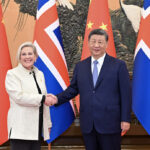The realization of ecological product value is a significant concept in the promotion of ecological civilization, embodying the principle that “lucid waters and lush mountains are invaluable assets.” It serves as a crucial pathway to achieving harmony between humanity and nature. Key discussions on this topic highlight the need to accelerate the establishment of mechanisms for realizing the value of ecological products, ensuring that environmental protection and restoration efforts receive fair compensation while those who damage ecosystems bear appropriate costs. These insights provide fundamental guidance for advancing ecological civilization in the modern era, representing a major innovation that integrates ecological and economic principles.
The realization of ecological product value represents a major theoretical innovation in ecological civilization thought.
This concept aims to activate nature’s wealth-creating potential through institutional design, achieving both environmental preservation and economic benefits. It signifies a breakthrough in theoretical perspectives.
By advancing Marxist ecological theory, it outlines a scientific pathway for transforming “lucid waters and lush mountains” into “invaluable assets.” While classical Marxist writers emphasized the dialectical relationship between “natural productivity” and “human-nature material exchange,” they did not systematically address how ecological value translates into economic value. Modern interpretations innovatively construct conversion pathways by incorporating natural capital (such as forest carbon sinks and water conservation) into the scope of productivity, making ecological protection an endogenous driver of economic growth.
This approach fosters synergy between economic and ecological systems, vividly demonstrating the principle of harmonious coexistence between humanity and nature. It marks an evolution from “resource management” to “value management” in ecosystem governance, addressing the strategic need to transform ecological environments into tradable products while resolving externalities through economic development.
Scarcity redefines market foundations, balancing ecological constraints with economic incentives. Clean air, freshwater, and other ecological products have absolute natural supply limits. Mechanisms for realizing their value translate this scarcity into market signals through property rights definition and ecological compensation. Rising living standards drive growing demand for high-quality ecological products, reflecting societal aspirations for better lives. Tiered pricing and eco-labeling meet diverse consumption needs while using price mechanisms to curb overconsumption, creating a virtuous cycle of “demand growth—resource protection—value enhancement.”
Standardization facilitates the scientific conversion of ecological value into market value. Natural laws form the basis for standards—forest carbon sink calculations rely on tree species’ photosynthetic efficiency, while water pollution rights consider aquatic self-purification capacity. Social consensus, achieved through deliberative democracy, bridges differing perceptions of ecological value. Modern valuation techniques simulate market scenarios to capture genuine public willingness to pay, grounding value standards in public sentiment. Technological integration, such as remote sensing and blockchain, enables real-time ecological data collection and automated smart contracts, reducing transaction costs.
Lifecycle ecological production integrates environmental protection with industrial development, requiring every stage—from resource extraction to final disposal—to adhere to ecological principles. This concept reshapes traditional production models through “ecological industrialization” and “industrial ecologicalization,” unifying economic development with ecological security.
This framework advances the modernization of ecological governance, contributing Chinese wisdom and solutions to global environmental challenges. It innovates governance structures by combining government oversight with market mechanisms—governments set ecological red lines through property rights definition and standard-setting, while markets guide efficient resource allocation through carbon trading and water rights markets. This collaborative model transcends binary thinking, fostering multi-stakeholder participation.
The realization of ecological product value is a key instrument for implementing ecological civilization thought.
It embodies the integration of new development philosophies, fostering green productivity and shared prosperity.
As a pathway for applying new development concepts in ecology, it addresses theoretical demands for innovation and green growth. From a demand perspective, it redefines ecosystem services as economic units with clear utility boundaries and market responses, solving traditional challenges in environmental economics. From a supply perspective, it emphasizes ecological agency, focusing on self-repair and regulatory mechanisms. Unlike conventional theories, it constructs a composite production function combining human labor and ecological response, reflecting breakthroughs in resource pricing and the internalization of ecological scarcity.
It establishes new paradigms for regional coordination. For example, cross-provincial river basin compensation mechanisms combine fiscal transfers with market transactions, allowing downstream economic benefits to upstream conservation efforts. This creates incentive-compatible systems where protectors are compensated, polluters pay, and users bear costs, resolving the dichotomy between ecological preservation and economic growth.
As a green engine for cultivating new-quality productivity, it aligns with the vision that “green development is the hallmark of high-quality development.” Digital and intelligent technologies revolutionize ecological governance, transitioning from “correcting market failures” to “algorithm-enabled market equilibrium.” Blockchain secures property rights for previously ambiguous ecological resources, while IoT and remote sensing transform static natural capital into dynamic, traceable data assets.
These innovations reshape supply curves—sensor networks quantify ecological stocks and flows, AI optimizes restoration projects, and digital



